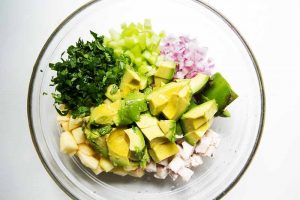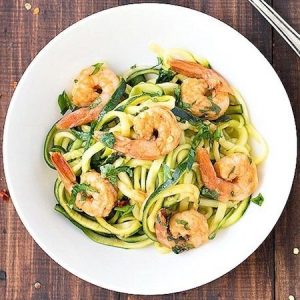So we’re in college. We no longer come home after a long day of classes to the enticing smells of our mom or dad cooking a meal. Our range of food options is now limited to, let’s be honest, miserable dining hall food, Ferguson dining, and ramen noodles. But what about those of us who want to keep a healthy diet, yet continually struggle to find options? It seems all our available choices would have us gain the “Freshman Fifteen.” Some of us must eat healthy due to diet restrictions, or simply from a personal preference. While the options we are handed do not necessarily coincide with our chosen lifestyles, we can still make healthy cooking/eating work.
Being gluten-free, the meal plans do not work for my diet (unless I like eating a salad and a plain hamburger patty for every meal). Due to this obstacle, I’ve had to adapt to buying groceries and cooking healthy meals for myself. Cooking, let alone healthy cooking, on my own seemed impossible for my limited time and budget; but as I continued to get better at grocery shopping and meal prep, it’s difficult to imagine ever going back.
These are a few things that I have learned through trial-and-error on cooking healthy meals:
- Use Pinterest. http://Pinterest.com has become my best friend when it comes to finding easy, healthy recipes that won’t break my college budget. The results you can get are endless and tailored to many different diets. When searching for recipes, I search “easy cheap healthy meals” since I am not too
 experienced in cooking and I am on a strict budget.
experienced in cooking and I am on a strict budget. - Eat a balanced meal. A typical healthy meal consists of a protein, a fruit and a vegetable (my personal preference), and some type of carb/starch. When cooking healthy, 90% of the time I choose brown rice as my carb– mostly because it is extremely good for you and simple to follow directions for simmering on a stove.
- Frozen meats are OK. Not all of us have the funds to buy fresh meat to cook in our dorm/small apartment kitchen. I discovered that I can substitute buying frozen meats in bulk so it is cheaper. It is possible to cook frozen meat in the oven, skillet, and sometimes microwave while still maintaining the same health benefits of cooking fresh-cut meats.
- Buy fresh produce. I always buy fresh vegetables and spices. Pre-packaged spices tend to contain other unnatural ingredients that aid in making them last longer. It is not expensive buying fresh foods; for example, if a certain recipe calls for cilantro and garlic, I might be looking at spending $1.50 for a fresh bunch and clove from produce.
- Scan Recipes. I watch out for recipes that call for too many ingredients that are high in fats, carbohydrates, and sugar. Sometimes it’s easy to assume that because we eat a vegetable and/or fruit and a grilled protein that none of the other ingredients matter. I try to search for recipes that are low-carb and sugar free. Sugars and carbohydrates are often present in foods that taste delicious as a distraction for the negative effects they can have on our health.
We don’t have to be pros in the kitchen to cook healthy meals– we just simply need Google, YouTube, and an open mind. Just because we are in college now, doesn’t mean we should not continue to monitor what we put in our bodies. Cooking healthy and eating healthy in college is possible, even without breaking our bank. Below are some links to healthy recipes that I have tried and love:
Avocado Chicken Salad: http://www.simplyrecipes.com/recipes/avocado_chicken_salad/
Creamy Cilantro Lime Chicken: http://sallysbakingaddiction.com/2015/07/08/skillet-chicken-with-creamy-cilantro-lime-sauce/
Garlic Butter Shrimp Pasta: http://damndelicious.net/2015/03/13/garlic-butter-shrimp-pasta/ (*instead of pasta I used zucchini noodles)
